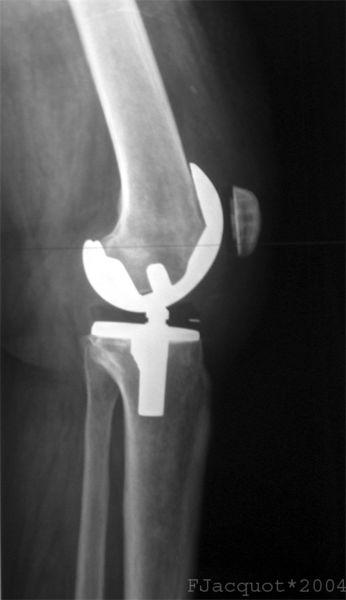First, a little background to give the research some context. [1]
Osteoarthritis is the most common type of arthritis and a common source of disability. It is a slowly progressive disease involving loss of water content to the cartilage of the joints, resulting in a chronic inflammatory process creating a deformed and painful joint. Many individuals over age 65 demonstrate radiologic evidence of arthritis but are asymptomatic – so bony changes, by themselves, are not a cause for medical intervention.
The problem is partially mechanical. "Maintaining an ideal body weight, body mass index, and posture significantly decreases the joint reaction forces across the joint." And abnormal mechanics upregulates sympathetic activity with the unintended consequence of heightening our response to pain.
Non-operative care remains the standard for initial management and includes treatments directed at the underlying mechanical and inflammatory components. Weight loss and aerobic exercise are helpful evidenced-based interventions. A reduction of BMI by 2 reduces symptoms, and aerobic exercise maintains long-term function for active patients. Injection of agents into the joint to reduce inflammation and cushion the bone has been demonstrated to be effective. The use of acetaminophen (Tylenol) has long been considered the initial pain management, which may then evolve to include nonsteroidal anti-inflammatory drugs and steroid injections. [2]
Total knee replacement has been performed for 50 years and is beneficial in a majority of cases and is "cost effective" in its improvement of quality of life issues, e.g., mobility and pain relief. Surgery aims to restore mechanical alignment while removing the source of the pain, thereby restoring a patient's activities of daily living. The use of TKR has increased annually and continues to expand as the population ages with heavier and heavier individuals. While other forms of arthritis may mandate TKR, osteoarthritis accounts for over 90% of cases, women being more likely to undergo surgery than men.
When to consider surgery
The indication for surgery remains radiographic changes and persistent pain limiting daily activity for more than six months despite maximal medical management. Despite hard markers, the decision to operate remains partially subjective because of individual perceptions, by physician and patient, of both pain and limitation. There are two further necessarily subjective considerations; patients must be considered acceptable surgical risks and able to participate in their aftercare.
The Study
The researchers made use of two longitudinal studies involving patients with or at risk for osteoarthritis; neither study offered treatment. Patient age, the severity of pain, radiologic severity, knee stability, and immobility, were used to classify 8,000 patients (16,000 knees) as a potential or inappropriate surgical candidates. Whether the patient was within their "Goldilocks" moment was defined as being a potentially appropriate surgical candidate and undergoing surgery within two years of meeting those criteria. Patients undergoing surgery before meeting surgical indications were classified as "premature;" while patients meeting criteria and not undergoing TKR within two years of meeting those criteria were classified as "potentially appropriate but not replaced."
- 78% of knees did not rise to the level of surgical indications and did not undergo TKR during the study period. The remaining 3,417 knees (from 2,313 patients) formed the study group, with about a third, 852 patients undergoing 1,114 TKRs.
- Of the 91% of patients meeting the surgical criteria, only 9.2% underwent "timely" surgical treatment; the remaining 90.7% chose to defer surgery.
- The 9% of patient's who failed to meet surgical and still underwent TKR, the "premature," constituted 26% of all the TKRs performed.
- "...the odds of being "potentially appropriate but not replaced" were 2.8 times greater in blacks compared with whites."
- "The odds of being "premature" increased with living alone and decreased with being overweight or obese, having depressive symptoms, and older age."
Given the subjective nature of the decision to operate and the difficulty of identifying those personal factors from medical records, we should not consider these numbers too precisely. Here is the broad brush.
An overwhelming number of patients with evidence-based criteria for surgical care defer or are deferred. But how many were considered too high a risk or viewed surgery as "too invasive" for the benefit? Among those undergoing TKR, there appears to be a racial bias. But before jumping to conclusions, is this disparity related to access or cultural considerations? We should take a more in-depth look. Finally, over a quarter of patients undergoing surgery, did not meet the published criteria. Before concluding that this is just about the Benjamins, we need to uncover the unstated thinking; how physicians and patients weighed other factors. As the authors ask, "whether these patients are undergoing surgery for some other potential benefits such as fulfillment of social roles, which are neither captured in the appropriateness criteria nor reflected in the outcomes against which they were validated."
The decision to or not to operate is complex; we understand that intuitively. This study points out that our current models and criteria may not capture all the necessary elements involved in those decisions. When medical decisions, surgical in this instance, are classified as appropriate or not, much of the nuance and judgment, the art of medicine, making it bespoke care, is lost.
[1] Numeric data and overview based upon Management of Primary Knee Osteoarthritis and Indications for Total Knee Arthroplasty for General Practitioners Journal of American Osteopathic Association
[2] The American Academy of Orthopedic Surgery believes the evidence for the use of weight loss, aerobic exercise, and intra-articular placement of glucosamine or chondroitin are Level 1 Evidence, Graded A.
Source: Examining Timeliness of Total Knee Replacement Among Patients with Knee Osteoarthritis in the U.S. Journal of Bone and Joint Surgery DOI: 10.2106/JBJS.19.00432




